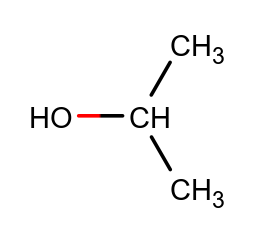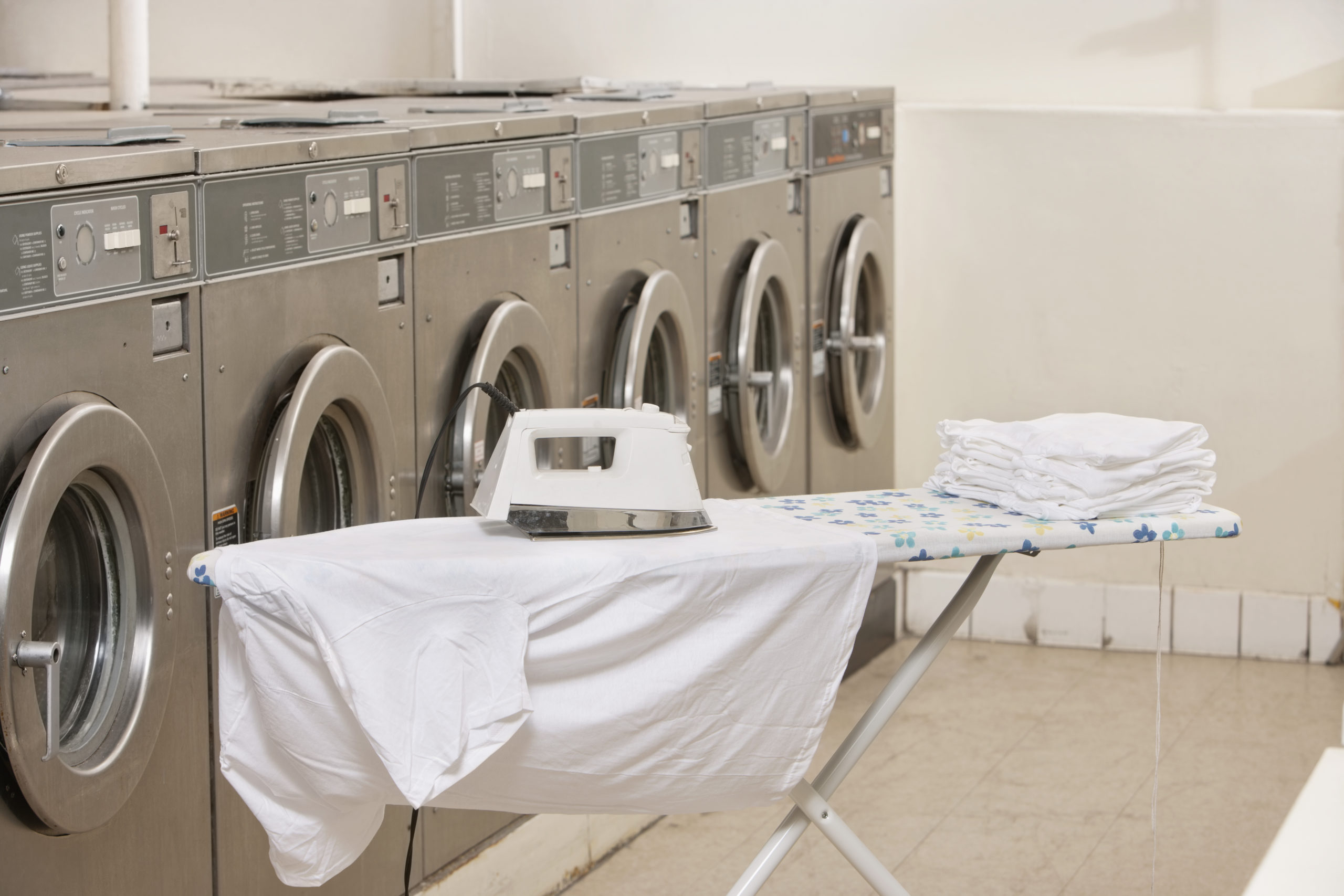The name is not easy to pronounce. Isopropanol, also known as isopropyl alcohol, 2-propanol, or in brief IPA, is the easiest form of a non-cyclic secondary alcohol. Isopropanol contains a hydroxy group at the central carbon atom and is a colorless and highly volatile flammable liquid. Isopropanol has a characteristic odor and reminds of hospitals and doctors’ surgeries because it is a component of many disinfectants and a real all-purpose weapon against dirt and bacteria. In this article, we will show you what you can do with Isopropanol.
Isopropanol is a common base chemical. The substance is for example used as a starting material for the production of acetone in the chemical industry or part of the ingredients list for products in many other industries. For example, household or cosmetics.

The all-rounder for cleaning
Compared to other cleaning agents, Isopropanol, also called isopropyl alcohol or IPA, has the clear advantage of not only cleaning but also disinfecting surfaces and is, therefore, one of the most effective agents you can use to clean for example in your household. If you want to save yourself time with scrubbing and inaccurate results, IPA is just the right thing for you. Isopropyl Alcohol can be used in a number of different disciplines, including to clean screens or remove annoying stickers that would otherwise leave unpleasant sticky marks. As you can see here, isopropanol is suitable for stubborn jobs that you might otherwise sit on several times and not be able to remove all residues.
Before you learn more about the uses of isopropanol, you should learn more about the detergent to determine if it’s right for you. Because the cleaning agent has also some risks. IPA is toxic and highly flammable. Moreover, it should not be drunk and direct contact with the skin and eyes can lead to irritations. Therefore, it is better to take a brief look at the most important facts.
The most important facts
- Isopropanol is chemically in the functional group of secondary alcohols
- The substance has a characteristic smell.
- Isopropanol is also named Isopropyl alcohol, 2-Propanol, or IPA.
- IPA is often used as a cleaning and disinfecting agent.
- The chemical dissolves, fats, resins, and other deposits easily.
- Concentration is an important factor when purchasing IPA.
- Hardware stores, drugstores and online market places sell the chemical.
- Different application bottles are available.
- The secondary alcohol is a colorless liquid and highly flammable.
- Used wrong, IPA causes eye or skin irritations or is even toxic.
What is isopropanol suitable for?
Isopropyl alcohol is best known as a solvent and disinfectant agent. Organic substances can be removed particularly easily with this alcohol. Because of its versatile properties, isopropanol is used in many cleaning products for personal use in households. Moreover, the cleaning agent is also very often used in the medical sector, for example in surgeries and hospitals. Especially, surfaces are disinfected with this cleaning agent.
Isopropanol is also a common chemical in the cosmetics industry. The substance is the edict in the production process of Acetone, which is used for example as an ingredient in nail polish removers. Acetone ensures that even the most stubborn nail polish does not stand a chance. Besides this, the cleaning agent is also used as a grease remover or for the cleaning of fuel systems in cars. Moreover, it is an ingredient in antifreeze blends.
Safety advise for a secure handling
First of all: Dealing with IPA should not be taken easily. It is highly dangerous and children should never come into contact with it. Not only can the product cause irritation of the skin, but the vapors themselves can irritate the mucous membranes. If you want to clean with isopropanol, you should think about the disposal before. Under no circumstances should it be disposed of with household waste.
GHS hazard statements:
H225, H319, H336
GHS precautionary statements:
P210, P233, P240, P305+351+338, P403+235
Synonyms and Identifiers
| IUPAC | Propan-2-ol |
| CAS Number | 67-63-0 |
| UN number | 1219 |
| InChI | InChI=1S/C3H7OH/c1-3(2)4/h3-4H,1-2H3 |
| SMILES | CC(O)C |
| PubChem CID | 3776 |
| Synonyms | 2-Propanol Isopropanol iso-Propanol i-PrOH IPA sek-Propanol |
What is the right concentration of Isopropanol?
Now, the question is which concentration has what kind of effect and how sharp the detergent should be to achieve your desired goals. Under no circumstances should a 100 percent isopropanol solution be used. A 70 percent solution is generally recommended for household use. It is better to work with a less sharp solution, because this is still dangerous, but does not have such a strong effect. A too strong concentration is not only dangerous for you, but the agent also may attack surfaces more strongly.
Applications for Isopropanol
As you have already noticed, Isopropanol has numerous applications, for private use mainly in the household. However, you have not yet received any practical examples, which will follow now. Here you will find some applications for which this secondary alcohol is suitable in the household.
The disinfection of surfaces
Germs and bacteria quickly find their way onto the most diverse surfaces. If the surfaces are not cleaned regularly or sufficiently, the germs spread quickly and you run the risk of getting infected. It is, therefore, better to clean surfaces regularly and above all to disinfect them. With an IPA solution, you clean and disinfect with only one agent. This saves work and time.
Removal of stickers
Especially children and teenagers have fun sticking stickers on surfaces. Stickers usually have the characteristics that they stick firmly and are difficult to remove. Alone with soap and water, you sit for hours on just one sticker and when the paper is removed, the annoying glue is still left. With isopropanol, the tedious work is over. Stickers are no longer your enemies because you know how to get rid of them quickly.
Cleaning and disinfecting screens
Touch screens, in particular, are quickly covered with thick films of grease. You always have your mobile phone in your hand, take it with you everywhere, but how often do you bother to clean it? Most people clean their mobile phones, if at all rarely. But the smooth surfaces provide contact points and collection points for germs and bacteria that spread over your hands. If you make a call, they can even get into your face. With the IPA agent, you can not only clean the screen of your mobile phone from grease but also disinfect it. Just as with the previous applications, it is important that you choose a concentration of 70 percent for your isopropanol solution.
Remove ink
Felt-tip pens and ink leave unpleasant stains that are difficult to remove with water alone. With IPA you no longer have to put up with stains, but can take targeted action against them. Apply some isopropanol to the stain, let it work for a while so that the ink gets wet again and then wipe the stain off and the cleaning is finished.
Where to buy Isopropanol?
Isopropanol is available in many drugstores and DIY stores. When buying it, you should pay particular attention to the concentration of the chemical substance. The higher the concentration the sharper the product. Isopropanol is available in different concentrations, but you should only buy the amount you actually need to have.





